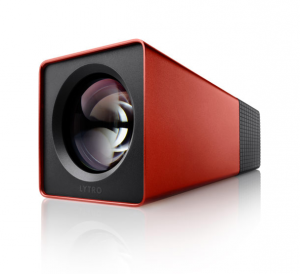 Been tons of chatter online about the Lytro camera the last few weeks. In case you’ve been living under a rock or too busy to notice, then you’ll be happy to know that the new Lytro camera allows you to select focus AFTER you shoot the photograph. AMAZING technology developed at Stanford by Ren Ng. Just like you can change the white balance after capture when shooting RAW, well now you can put those striking blue eyes of your model in focus later.
Been tons of chatter online about the Lytro camera the last few weeks. In case you’ve been living under a rock or too busy to notice, then you’ll be happy to know that the new Lytro camera allows you to select focus AFTER you shoot the photograph. AMAZING technology developed at Stanford by Ren Ng. Just like you can change the white balance after capture when shooting RAW, well now you can put those striking blue eyes of your model in focus later.
Consider that with the technology of a camera like the RED Epic – shooting a 5,000 pixel wide image at 96 frames per second. You can aim that sucker at a scene and shoot 1000 14 megapixel still images in 10 seconds. No more need to catch ‘the decisive moment’!
Combine these two technologies? Whew! Now you’ve really got something.
Unless… your pictures have no focus. If you think that you’re photos are going to be better in the future because you don’t have to pick the moment or focus on your subject, you’re entirely wrong. These technologies are truly amazing, revolutionary and will continue to change the face of photography as we know it.
But mark my words, if you’re goal is to get your work to stand out from the crowd (as good art does), then you’ll need to focus all the more.
Focus on subject.
Focus on content.
Focus on meaning.
Focus on artistic vision…
…because these are all the tools that computers can’t help you with and these are the only ways from here on out that you’re going to be able to make a mark.
Focus on that.
[and don’t hate it, celebrate it, cause it’s all you’ve got.]






















word.
I admire your unwavering optimism with pretty much everything you put out there Chase, including such advances in technology as this but to me this circumvents a major aspect of ‘photography’ as an art form and as such makes me a little sadder and nostalgic for what once was… When digital came along people were sceptical about it initially but they realised that it did away with time consuming darkroom processes and enabled people to make quick on-the-spot changes to images through chimping and the endless possibilities for file delivery that came with it. However the basic principles remained (focus, aperture choice etc.) and you still had to have a decent level of skill to capture an image which successfully translated what you wanted to too the viewer. Now it seems (as you mentioned) that the ‘decisive moment’ is no longer going to be very decisive… Henri will be rolling in his grave!
When/if this technology becomes well known and common place, it will cheapen the rest of the art form and there’ll always be a question mark hanging over certain images because there will be uncertainty about how the image was captured. If you found out that, for example, the amazing image of a high speed car crash that you liked was taken by someone who just snapping wildly away with one of these cameras, then later sharpened up in software, how would you feel about it (don’t raise PS, it’s different if used properly)? If you don’t mind, fantastic, but if there’s something there that makes you feel gipped, I wouldn’t blame you… I guess what I’m trying to say is that I’m a little worried as I never like to see something get watered down and ‘bettered’ when it ain’t broke in the first place… My 2 cents worth.
Just a fad, and an expensive one too. Merely just a novelty toy. You’re better off investing in a niece piece of glass…